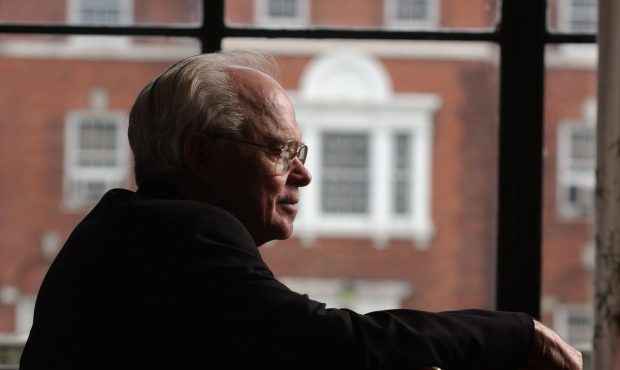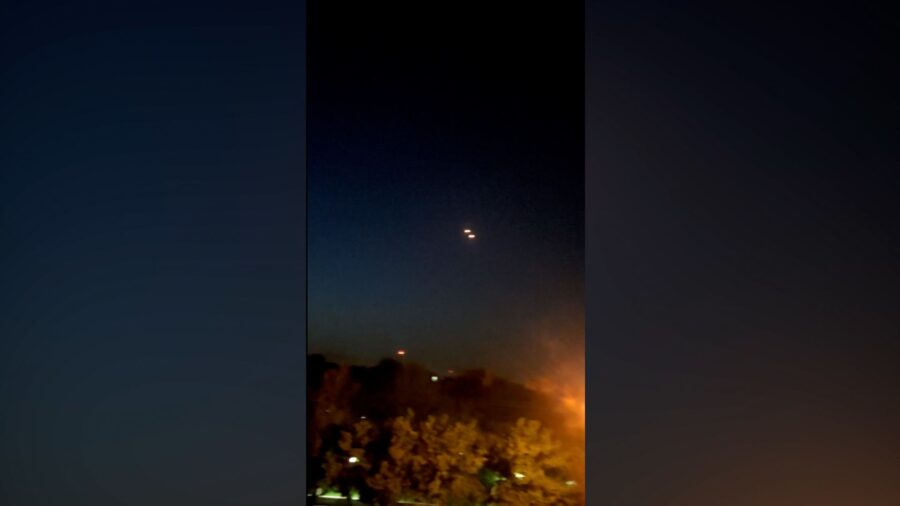Eugene Parker, The Pioneer Behind The ‘Mission To Touch The Sun’
Aug 11, 2018, 12:56 AM | Updated: Jun 7, 2022, 4:01 pm

Eugene Parker was fascinated by physics from a young age. He went on to pioneer the field of heliophysics, a new field of solar research.
(CNN) — “Let’s see what lies ahead.” That is the message of 91-year-old pioneering astrophysicist Eugene Parker being sent to the sun.
It’s a humble, hopeful and scientific message that perfectly embodies Parker, the first living person to have a spacecraft named after him.
On Saturday, the Parker Solar Probe will launch from Florida on a seven-year mission to unlock the mysteries of the sun. It was named in honor of Parker’s pioneering work that established a new field of solar research, heliophysics, in the 1950s. Parker will be there in person to watch his namesake spacecraft launch.
While Parker was honored by NASA’s decision, he’s concerned that the hundreds of mission engineers and scientists won’t receive the credit they deserve for creating the first “mission to touch the sun.”
“From the experience of seeing the probe up close, I understand now the difficult task you are undertaking, and I am sure you will succeed,” Parker said when he was able to see the probe for himself last year.
The journey to make this mission possible has taken 60 years, and it’s fitting that Parker will get to watch the mission unfold. On board the craft is a chip carrying photos of Parker, his groundbreaking 1958 paper on solar wind and more than 1.1 million names submitted by the public that will be cheering the Parker Solar Probe along.
The chip is attached to a card that reads, “The Parker Solar Probe mission is dedicated to Dr. Eugene N. Parker whose profound contributions have revolutionized our understanding of the sun and solar wind. ‘Let’s see what lies ahead.’ Gene Parker, July 2017.”
A voyage of curiosity
As a child, Parker lived in Buffalo, New York, two blocks from a railroad yard. The trains fascinated him. He began by wanting to know how the steam locomotives worked and how the switch changed tracks, and the questions only continued. His father, an aeronautical engineer at the Consolidated Aircraft Company, would explain things in a way he could understand.
That only stoked the fire of Parker’s curiosity.
“I was always fascinated by how things work and learning about them,” Parker said.
He did experiments with “tin can” telephones to learn how sound traveled. Parker’s family took walks by Niagara Falls that caused Parker to have questions about molecules of water and the limestone of the area. He inherited a microscope from his grandfather and studied microorganisms. The wonders of the world never ceased for him.
But school was a different story, and Parker says he was “not an enthusiastic student” — at least until high school, when he was introduced to algebra, Euclidean geometry and trigonometry. Their simplistic principles, as opposed to biology or social studies, piqued his interest.
And then senior year, he was introduced to physics. “I realized how fascinated I was,” he said.
Parker had the epiphany that physics was the basis for all of his interests over the years, and he quickly realized that he wanted to become a physicist like his grandfather and an uncle at Bell Laboratories.
Parker pursued a bachelor’s degree in physics at Michigan State University and then received his Ph.D. from the California Institute of Technology in 1951. He began his teaching career at the University of Utah, but since 1955, Parker has been on the faculty at the University of Chicago and its Fermi Institute. Parker is now the S. Chandrasekhar Distinguished Service Professor Emeritus at the University of Chicago.
Discovering solar wind
Parker wasn’t viewed as a pioneer in 1958. Instead, he battled the old guard for his new ideas to be accepted.
The then-30-year-old submitted a paper to the Astrophysical Journal for review before publication. In it, he proposed the concept of solar wind.
Parker realized that the sun had a magnetic field that created a structure in our solar system, populated by plasma and hot particles flying from the sun to the edge of the solar system. He realized that this stream was a flow of gas. “It hit me that it’s a solar wind,” Parker said.
Solar wind is the flow of charged gases from the sun, present in most of the solar system. It screams past Earth at a million miles per hour, and disturbances can cause disruptive space weather that impacts our planet.
The mathematics to predict the solar wind were simple: four lines of algebra.
But the two esteemed referees reviewing his paper rejected Parker’s “radical” idea. There were no errors in his study or his math; at the time, astronomers believed that the space between planets was a vacuum, and they couldn’t let go of the old ideas.
“Well, he couldn’t find anything wrong with it,” Parker said. He remembered thinking, “so it must be pretty good.”
Parker went to the editor of the journal, Subrahmanyan Chandrasekhar, an astrophysicist who would be awarded the 1983 Nobel Prize for Physics. Chandrasekhar overruled the referees and agreed to publish the paper.
“Many of his colleagues thought he must be wrong, but when [the probe] Mariner 2 was on the trip to Venus in 1962, it revealed that a supersonic wind was always present,” said Ed Stone, longtime project scientist for NASA’s Voyager mission, who worked across the hall from Parker at the University of Chicago.
Parker’s work revolutionized our understanding of the sun and interplanetary space. He was relieved when there was direct proof, because then they could stop arguing and continue to push science forward.
But solar wind is not the only thing credited to Parker. He worked out the dynamics of cosmic rays in the galaxy alongside a few other colleagues, and he discovered the Parker Spiral (the shape of the wind from the sun) and the Parker limit for monopoles, which is about the survival of galactic magnetic fields that places a limit on the flux of magnetic monopoles in the universe.
“I’m proud of the fact that I thought of the solar wind,” Parker said. “It was an exercise in pursuing curiosity, which is the main motivation for studying physics from a personal standpoint.”
A 60-year journey
Parker is humble when he reflects on his legacy, but perhaps it’s because he was surrounded by pioneers of astronomy and astrophysics in the 1950s and 1960s, during the Space Age.
As Angela Olinto, dean of physical science at the University of Chicago, pointed out, Parker was contemporaries with Nobel laureates Chandrasekhar, Enrico Fermi and Arthur Holly Compton. All of these former University of Chicago professors have posthumously had spacecraft named for them, including the Chandra X-ray Observatory, the Fermi Gamma-Ray Telescope and the Compton Gamma Ray Observatory.
Olinto has known Parker since the 1990s and said that he’s regarded as a celebrity on the University of Chicago campus but has never let the fame go to his head.
“He was not only thinking differently but moving forward,” she said. “He was one of these people that could not only have the new idea but really establish a field.”
Olinto believes that the probe is just the next step in Parker’s long legacy, which began with his bold new ideas in 1958.
“There are very few opportunities for ideas to be tested at a high level in science and know the person who came up with the idea,” she said. “It’s been 60 years from the beginning, and having that chance to be with him and enjoying it is amazing. Having the originator of the idea with us looking at the same data and launch is really exciting.”
Parker is already looking forward to the data that the Parker Solar Probe will provide, hopefully to answer some of our key questions about the sun.
The mission’s objectives include “tracing the flow of energy that heats and accelerates the sun’s corona and solar wind, determining the structure and dynamics of the plasma and magnetic fields at the sources of the solar wind and explore mechanisms that accelerate and transport energetic particles.”
The first data download from the probe will be in early December, and as soon as Parker can get his hands on the mission data, he’ll be eager to see how this new information — and any surprises within it — adds to what he calls “a puzzle of many pieces.”
“I always looked at myself as a physicist learning new tricks by looking at nature,” Parker said. “Space, the whole universe — I know no better place to find new physics.”
The-CNN-Wire
™ & © 2018 Cable News Network, Inc., a Time Warner Company. All rights reserved.













